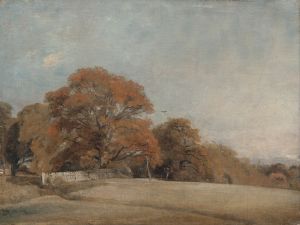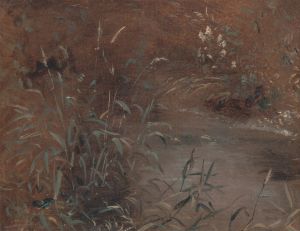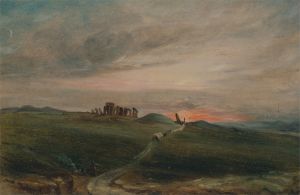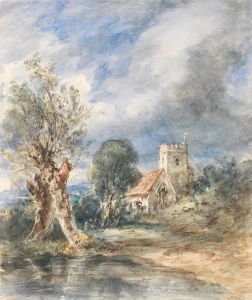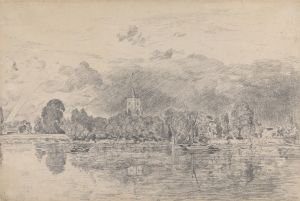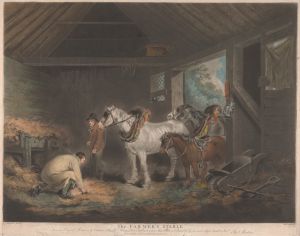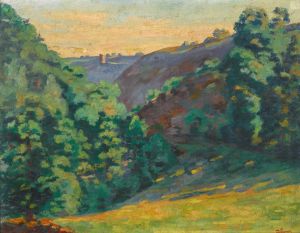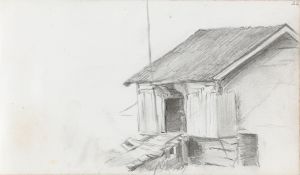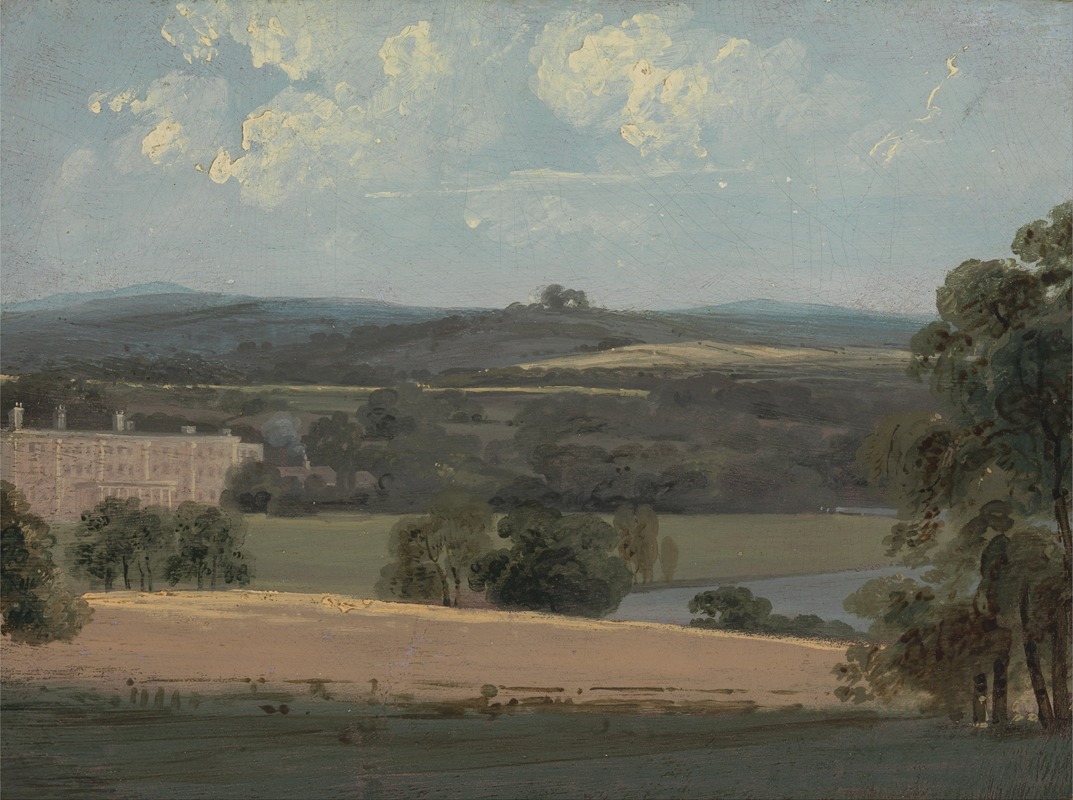
Trentham Park
A hand-painted replica of John Constable’s masterpiece Trentham Park, meticulously crafted by professional artists to capture the true essence of the original. Each piece is created with museum-quality canvas and rare mineral pigments, carefully painted by experienced artists with delicate brushstrokes and rich, layered colors to perfectly recreate the texture of the original artwork. Unlike machine-printed reproductions, this hand-painted version brings the painting to life, infused with the artist’s emotions and skill in every stroke. Whether for personal collection or home decoration, it instantly elevates the artistic atmosphere of any space.
John Constable's painting Trentham Park is a work by the renowned English Romantic painter, best known for his landscapes that capture the natural beauty of the English countryside. Created in 1827, this painting depicts the grounds of Trentham Hall, a prominent estate located in Staffordshire, England. The estate was owned by the Leveson-Gower family, later known as the Dukes of Sutherland, who were among the wealthiest and most influential families in Britain during the 19th century.
The painting was commissioned by the 2nd Marquess of Stafford, later the 1st Duke of Sutherland, as part of a broader trend among the aristocracy to document their estates through art. Constable was invited to Trentham to create a depiction of the parkland, which had been redesigned by the famous landscape architect Capability Brown in the 18th century. By the time Constable visited, the estate had undergone further modifications, including the addition of formal gardens designed by Charles Barry.
In Trentham Park, Constable captures the expansive landscape with his characteristic attention to natural light and atmospheric effects. The painting features a view of the parkland with a serene lake, bordered by trees and open fields. The composition reflects Constable's ability to convey the harmony between human-made landscapes and the natural environment. The use of soft, diffused light and his signature brushwork imbue the scene with a sense of tranquility and realism.
This work is notable for its connection to Constable's later career, during which he increasingly received commissions from aristocratic patrons. While Constable is often associated with depictions of his native Suffolk, Trentham Park demonstrates his ability to adapt his style to different locations and meet the expectations of his patrons. The painting also reflects the Romantic era's fascination with the interplay between nature and human intervention, as seen in the carefully designed parkland.
Today, Trentham Park is recognized as an example of Constable's commissioned works, which, while less personal than his depictions of the Stour Valley, still showcase his mastery of landscape painting. The painting is held in a private collection and is not as widely known as some of Constable's other works, such as The Hay Wain or Dedham Vale. However, it remains an important piece within the context of his career and the broader tradition of English landscape art.
This concise overview is based on available historical records and avoids speculation about the artist's intentions or the painting's reception at the time of its creation.








